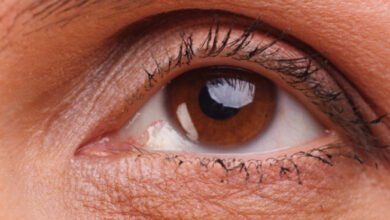
Gynecomastia, the enlargement of breast tissue in males, is a common condition that affects many men worldwide, including those in Al Ain. This condition can occur during various life stages, causing physical discomfort and emotional distress. While it is often treatable, understanding its causes is crucial for managing and preventing it. In this article, we will explore the various causes of Gynecomastia in Al Ain, examining both physiological and environmental factors that can contribute to the development of this condition.
1. Understanding Gynecomastia
Gynecomastia occurs when the tissue in one or both breasts becomes enlarged. The condition can cause swelling, tenderness, and in some cases, pain in the chest area. It is different from pseudogynecomastia, where excess fat, rather than glandular tissue, leads to a similar appearance. Gynecomastia is typically a result of an imbalance between the hormones estrogen and testosterone. When estrogen levels rise or testosterone levels fall, it can lead to the growth of breast tissue in males.

2. Hormonal Imbalances
The most common cause of gynecomastia is a hormonal imbalance, specifically an increase in estrogen or a decrease in testosterone levels. Several factors can disrupt this balance and trigger gynecomastia:
A. Puberty
During puberty, both males and females undergo significant hormonal changes. In males, an increase in estrogen levels relative to testosterone levels can lead to the development of gynecomastia. This is often a temporary condition, as the hormonal levels stabilize over time, and the breast tissue may shrink as a result.
B. Aging
As men age, testosterone levels naturally decline, leading to a relative increase in estrogen levels. This hormonal shift can contribute to the development of gynecomastia in older men. In fact, studies show that gynecomastia becomes more common with age, particularly in men over 50.
C. Medical Conditions
Certain medical conditions can also disrupt hormonal balance and lead to gynecomastia. These conditions include:
- Hypogonadism: A condition where the body produces insufficient testosterone.
- Hyperthyroidism: An overactive thyroid can lead to a decrease in testosterone levels.
- Klinefelter Syndrome: A genetic condition where males have an extra X chromosome, leading to lower testosterone production.
- Pituitary Tumors: Tumors in the pituitary gland can affect hormone production and lead to gynecomastia.
3. Medications and Drugs
Certain medications and drugs are known to contribute to the development of gynecomastia. These substances can either alter hormone levels or affect the metabolism of estrogen and testosterone. Some common medications and substances that may cause gynecomastia include:
A. Anti-Androgens
Drugs used to treat prostate cancer, such as spironolactone or flutamide, can block the effects of testosterone, leading to an increase in estrogen activity and the development of gynecomastia.
B. Anabolic Steroids
The use of anabolic steroids, often taken to enhance muscle mass or improve athletic performance, can disrupt the body’s natural hormone balance. When testosterone levels rise artificially, the body may convert some of it into estrogen, causing breast tissue enlargement.
C. Anti-Anxiety Medications
Certain medications used to treat anxiety and depression, such as diazepam or antidepressants, can lead to hormonal changes that result in gynecomastia.
D. Heart Medications
Some medications prescribed for heart conditions, including digoxin and calcium channel blockers, have been associated with gynecomastia.
E. Recreational Drugs and Alcohol
Substance abuse, particularly the use of alcohol, marijuana, and other recreational drugs, can alter hormonal levels and contribute to the development of gynecomastia. These substances may interfere with liver function, which is essential for metabolizing estrogen.
4. Obesity and Increased Fat Storage
In Al Ain, as in many other parts of the world, rising rates of obesity contribute to the increasing prevalence of gynecomastia. Obesity leads to higher fat deposits, including in the chest area. Fat cells (adipocytes) produce estrogen, and excessive fat in the chest area can cause a hormonal imbalance, which leads to breast tissue growth.
A. Hormonal Conversion in Fat Cells
Excess fat tissue, especially in the abdominal area, can lead to an increase in the conversion of testosterone to estrogen due to the action of the enzyme aromatase. This results in elevated estrogen levels, contributing to the growth of breast tissue.
B. Visceral Fat
Visceral fat, which surrounds internal organs, is particularly problematic. This type of fat is known to produce more estrogen and can significantly impact the hormonal balance, potentially leading to gynecomastia.
5. Lifestyle Factors and Environmental Toxins
Environmental factors, including exposure to certain chemicals and endocrine disruptors, can also contribute to the development of gynecomastia. These substances mimic the effects of estrogen in the body, disrupting the normal balance of hormones. Some potential environmental causes include:
A. Exposure to Endocrine Disruptors
Endocrine disruptors, such as phthalates, bisphenol A (BPA), and pesticides, are chemicals that interfere with hormone regulation. These chemicals are often found in plastics, personal care products, and pesticides. Prolonged exposure to these substances can lead to hormonal imbalances that may result in gynecomastia.
B. Diet and Nutrition
The diet in Al Ain, like in many other regions, often includes a high intake of processed foods and synthetic additives that can affect hormonal levels. Certain foods, such as soy products, contain phytoestrogens that may mimic the action of estrogen and contribute to breast tissue growth in susceptible individuals.
6. Liver Disease
The liver plays a crucial role in metabolizing hormones, including estrogen. When liver function is impaired due to diseases such as cirrhosis, fatty liver disease, or hepatitis, the liver may not be able to metabolize estrogen properly. This can lead to an increase in circulating estrogen levels, which in turn can cause gynecomastia.
7. Genetics
In some cases, gynecomastia may be linked to genetic factors. Men with a family history of the condition may be more likely to develop it themselves. Genetic conditions like Klinefelter syndrome, which results in an extra X chromosome, can also contribute to the development of gynecomastia due to the hormonal imbalances they cause.
8. Psychological Impact of Gynecomastia
Although not a direct cause, the psychological impact of gynecomastia can be significant. In some cases, the stress or emotional distress caused by body image issues related to gynecomastia can exacerbate the condition. This can result in a cycle where emotional factors contribute to the progression of the condition, creating a feedback loop.
Conclusion
Gynecomastia is a complex condition that can have various causes, including hormonal imbalances, obesity, medication use, and environmental factors. In Al Ain, as in other parts of the world, lifestyle choices, genetic predisposition, and medical conditions play important roles in the development of this condition. Understanding these causes can help individuals take preventive measures and seek appropriate treatment options.
By addressing the root causes of gynecomastia, such as hormonal imbalances or obesity, and making necessary lifestyle changes, many men can manage or reduce the symptoms of gynecomastia. If you suspect that you have gynecomastia, consulting with a healthcare provider is essential for proper diagnosis and treatment.
FAQs
1. Can gynecomastia go away on its own? In some cases, especially during puberty, gynecomastia may resolve on its own as hormone levels stabilize. However, if the condition persists or causes significant discomfort, treatment options are available.
2. Can obesity cause gynecomastia? Yes, obesity can contribute to gynecomastia by increasing fat tissue, which produces estrogen and disrupts the balance between estrogen and testosterone.
3. Is gynecomastia hereditary? Genetic factors can play a role in the development of gynecomastia. If a family member has experienced the condition, you may be at a higher risk of developing it as well.
4. What medications can cause gynecomastia? Medications like anti-androgens, anabolic steroids, anti-anxiety medications, and certain heart medications can lead to gynecomastia.
5. Is gynecomastia linked to cancer? While gynecomastia itself is not cancerous, in rare cases, breast cancer in men can present with similar symptoms. It’s essential to consult with a healthcare provider for proper diagnosis.
6. How can I prevent gynecomastia? Maintaining a healthy weight, avoiding drugs or medications that disrupt hormonal balance, and making lifestyle changes can help prevent gynecomastia.
7. What are the treatment options for gynecomastia? Treatment options include lifestyle changes, medications to balance hormones, and surgery (e.g., liposuction or breast reduction surgery) to remove excess tissue.



